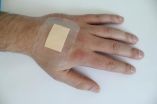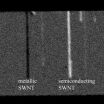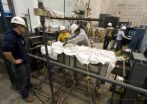(Press-News.org) An open letter from 20 consultants and a patient group published on bmj.com today, calls on the prime minister to take action over a legal loophole that allows drug companies to make easy profits by licensing existing treatments for rare (orphan) diseases.
They argue that the current situation concerning orphan drugs is not in the best interests of patients or the NHS and that the cost to the NHS is likely to be above £10m a year.
The original purpose of this legislation was to encourage drug companies to conduct research into rare diseases and develop new treatments. But, as the rules are currently enacted, many companies simply modify existing drugs and obtain a licence for one or more orphan diseases. This then gives the company sole rights to supply the drugs and to charge what many consider "exorbitant" prices.
One example of the effect of these rules is the drug 3,4-diaminopyridine (3,4-DAP), which doctors have been using for over 20 years to treat two rare muscle diseases at a cost of £800 to £1,000 per patient per year. The company BioMarin has now been issued with a licence to supply the drug (marketed as Firdapse) throughout Europe and charges £40,000 to £70,000 per patient per year - a 50-fold to 70-fold increase. Although Biomarin argues that Firdapse is more stable and reliable than 3,4-DAP, clinicians have not found instability to be a significant problem with 3,4-DAP.
Other examples include hydroxycarbamide (hydroxyurea) licensed for chronic myeloid leukaemia. Using 500 mg capsules, it costs £160 a year to treat a patient with sickle cell disease on an unlicensed basis, but it costs £14,900 a year using 1 g tablets of hydroxycarbamide licensed as an orphan drug for sickle cell disease.
Oral ibuprofen for analgesia costs £0.08 per gram, but intravenous ibuprofen for patent ductus arteriosus (a congenital heart disorder) costs £6,575 per gram, tens or even hundreds of times more than the cost of producing sterile ibuprofen solution for intravenous injection in an NHS facility.
"In the present economic situation it seems vital to ensure that systems are in place to prevent excessive commercial profits being made at the expense of patients and public spending," say the signatories.
They conclude: "Legislation on orphan drugs, far from encouraging the development of new treatments for orphan diseases, is severely limiting the availability of existing treatments. We believe that the Medicines and Healthcare Products Regulatory Agency and Department of Health should not just state the rules but should act now to progress the issue of unfairness upwards, so as to instigate change."
In a BMJ investigation, also published today, Dr Sam Richmond, a consultant neonatologist at Sunderland Royal Infirmary, and a signatory of the open letter, argues: "If drug companies are undertaking research where nobody else was interested – and some are – then a monopoly may be justified. But if it's a product already in use, they should clear off, or sell at a price comparable with the existing price."
Dr Daphne Austin, chair of the UK Commissioning Public Health Network, says: "It disgusts me, it really does. [Amifampridine] is one of a number of drugs that are not new, but under the legislation have been licensed so that they can be sold for much more money, which is pure profit." She believes the price set for the drug is "indecent" and points out that the extra cost of amifampridine in the UK "is equivalent to that of kidney dialysis for 323 patients."
This view is supported in an editorial, which says that current incentives to licence drugs for rare diseases "are now too generous." Authors Robin Ferner and Dyfrig Hughes believe the NHS "could, and should, make and distribute 'specials' (unlicensed medicines) for rare diseases" and that the GMC "should allow doctors to prescribe a drug that meets the individual patient's needs, but is not licensed for the specific indication, even if a licensed medicine exists for the same indication."
In an accompanying analysis, Timothy Cox and colleagues at the University of Cambridge argue that pricing for orphan drugs hinders access to treatment and may warrant a competition law investigation. They add that current high pricing contravenes the aim of the Orphan Regulation, which states: "Patients suffering from rare conditions should be entitled to the same quality of treatment as other patients."
INFORMATION: END
The metallic particles in the smoke emitted by fireworks pose a health risk, particularly to people who suffer from asthma. This is the conclusion of a study led by researchers from the Institute of Environmental Assessment and Water Research (IDAEA-CSIC), published this week in the Journal of Hazardous Materials.
"The toxicological research has shown that many of the metallic particles in the smoke from fireworks are bio-reactive and can affect human health", Teresa Moreno, a researcher from the IDAEA (CSIC) and lead author of a study that has been published this week ...
ANN ARBOR, Mich. -- University of Michigan researchers have solved the structure of a protein that is integral to processes responsible for maintaining a healthy heart and nervous system.
The protein structure in question is cystathionine beta-synthase, known as CBS. CBS uses vitamin B6 to make hydrogen sulfide (H2S), a gaseous signaling molecule that helps maintain a healthy heart and nervous system. H2S also induces a state of suspended animation or hibernation in animals by decreasing body temperature and lowering metabolic rate.
The work to decode the structure ...
Arlington, Va. — New research being presented at the 2010 International Pharmaceutical Federation (FIP) Pharmaceutical Sciences World Congress (PSWC) in association with the American Association of Pharmaceutical Scientists (AAPS) Annual Meeting and Exposition will feature an inhalable dry powder antibiotic that when used alone or with current treatments may significantly reduce treatment for tuberculosis (TB) and multi-drug resistant TB.
There are an estimated 9.4 million new cases of TB worldwide, according to the most recent statistics from the World Health Organization. ...
Whether a small cut with a fruit knife, a surgical wound or a major injury caused by a fall – the body's defense and repair system leaps into action and tries to close the wound as quickly as possible. Small injuries usually heal within a few days, but a gaping wound will take longer to heal, and an infection can take hold even after several days. Dressings protect the site of the injury but to check the wound they have to be removed. This can be painful for the patient and moreover it risks giving germs the chance to enter and cause infection. Scientists at the Fraunhofer ...
Hair clippings, cayenne pepper and raw eggs – these are just a few of the odd ingredients recommended to keep those pesky deer away from your backyard garden. But what about farmers who have hundreds of acres of Christmas trees to protect? North Carolina State University extension specialists have now found an effective, inexpensive alternative to available commercial products to keep the deer at bay.
The NC State researchers, led by Jeff Owen, a Christmas-tree production specialist, are exploring the use of inexpensive, inedible food byproducts – such as dried blood ...
WEST LAFAYETTE, Ind. - Researchers have demonstrated a new imaging tool for rapidly screening structures called single-wall carbon nanotubes, possibly hastening their use in creating a new class of computers and electronics that are faster and consume less power than today's.
The semiconducting nanostructures might be used to revolutionize electronics by replacing conventional silicon components and circuits. However, one obstacle in their application is that metallic versions form unavoidably during the manufacturing process, contaminating the semiconducting nanotubes.
Now ...
WEST LAFAYETTE, Ind. - Researchers at Purdue University are studying the effects of fire on steel structures, such as buildings and bridges, using a one-of-a-kind heating system and a specialized laboratory for testing large beams and other components.
Building fires may reach temperatures of 1,000 degrees Celsius, or more than 1,800 degrees Fahrenheit, said Amit Varma, a Purdue associate professor of civil engineering who is leading the work.g1
"At that temperature, exposed steel would take about 25 minutes to lose about 60 percent of its strength and stiffness," he ...
PITTSBURGH—A computer algorithm developed at Carnegie Mellon University matched living kidney donors with medically compatible transplant candidates late last month as the national Organ Procurement and Transplantation Network (OPTN), operated by the United Network for Organ Sharing (UNOS), began a national pilot program to increase the number of kidney paired-donation (KPD) transplants.
The initial run of the computer matching process included just 43 kidney transplant candidates and 45 potential living donors, but a national KPD pool eventually could include as many ...
Three days of critical international discussion and debate, led by a panel of experts from the International Society of Clinical Densitometry (ISCD) and the International Osteoporosis Foundation (IOF), have served to clarify a number of important questions pertaining to the interpretation and use of FRAX® in clinical practice.
The WHO Fracture Risk Assessment Tool (FRAX®), with models for some 26 countries, is an important new online tool that is being used by a steadily increasing number of physicians around the world. FRAX® is country-specific and calculates a patient's ...
Strokes, seizures and other neurological complications related to heart surgery account for "considerable morbidity and mortality," Loyola University Health System neurologists report in the November issue of the journal Hospital Practice.
Other complications include delirium, central nervous system infections, pituitary gland problems, spinal cord or peripheral nerve injuries, residual effects of anesthesia and medication toxicity.
Complications can involve any part of the central and peripheral nervous systems. "Neurologic complications are always a risk with cardiac ...





